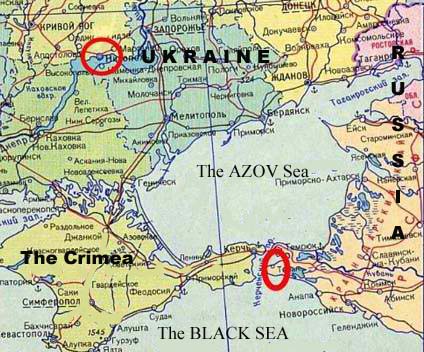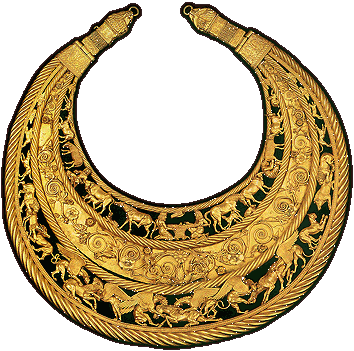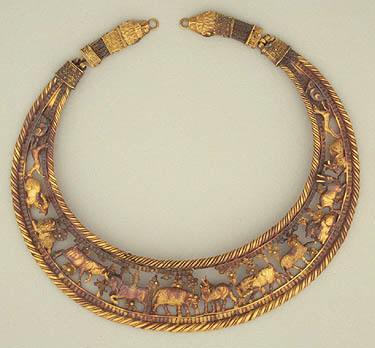SIGHTHOUNDS IN ANCIENT SCYTHIA

|
Over the centuries the steppe regions around the Black Sea (Southern regions
of modern Russia and Ukraine) sheltered various peoples.
Around 7 – 2 centuries B.C. the population of these vast areas were the Scythians. The Scythians hadn’t left any scripts but their history can be traced through ancient Greek authors. They were a dynamic military-minded people who founded powerful states and created remarkable culture. In the 2nd century B.C. the Scythian empire was invaded by hostile neighbours and ceased to exist. |
|
In 1971 excavators discovered ancient Scythian burial places in the South of Russia and Ukraine. Àmong other valuable finds they excavated gold necklaces. These two necklaces are found in different burial places separated by water and a 300 kilometers distance. These necklaces are dated 400 years B.C. |
 |
They are also different in design. Both have the same patterns though which suggests the idea that those were traditional Scythian patterns.
Both necklaces have the pattern of a dog chasing a hare. These patterns are placed symmetrically at the sides.


The dog obviously looks like a sighthound. It is a sighthound by manner of work too.
Below see the figures magnified.
The steppen areas where the Scythians lived are the same regions which have the biggest Chortaj population nowadays. In X1X century there were a lot of Krymski and Gorski sighthounds here as well.
Is it possible that Russian and Ukranian Chortajs and Stepnois originate from the Scythian sighthounds?
More about the ORIGIN OF CHORTAJS